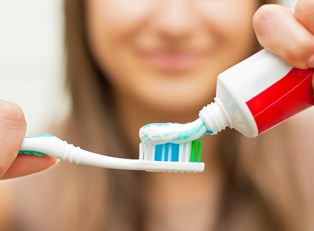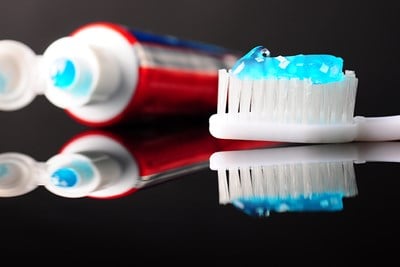Gingivitis is a mild stage of periodontal disease. It is often allowed to progress for some time without notice, because it causes at most a slight tenderness, and generally only a slight darkening and swelling of the gums. While good oral hygiene can help prevent gingivitis, poor oral hygiene isn’t necessarily all to blame for its development -- but it certainly plays its part.
Causes of Gingivitis
The causes of gingivitis include:
- Plaque: The mouth is filled with bacteria. When you eat, particularly things with sugars or starches, these substances combine with the bacteria to form plaque. Plaque is the sticky layer of fuzz you notice when you run your tongue over your teeth at the end of the day. It is easy enough to get rid of most of it by brushing and flossing regularly. However, the particles are so small they can easily slide up under the gums, or gingiva. It’s difficult to clear this plaque out using only at-home measures, and eventually it develops into tartar.
- Tartar: Tartar, or calculus, can develop from plaque in less than 3 days. Calculus is much more difficult to contend with, and since it’s so much harder to remove from under the gums, it can be a serious problem for your mouth. Not only does it become a firm layer of irritant to the gums, it also serves as a shield for bacteria, keeping them safely locked against the teeth. What’s more, it makes it harder to get rid of the plaque that forms daily, thereby making it easier for plaque to turn into calculus. But plaque isn’t the only instigator of calculus -- just the contents of your spit alone can make tartar!
Signs of Gingivitis
The gums are at risk for gingivitis even before tartar forms. Toxins produced by plaque can actually irritate the gums just as fully as calculus that has made its home beneath the gingiva. Over time, the gums become inflamed, and may feel puffy or swollen to the touch. The color changes from a pale pink to a darker red. The gums may bleed during brushing or flossing, and there may be some tenderness. At this point, gingivitis is still reversible, through professional dental cleaning. However, if the plaque, tartar, and bacteria are left to their own devices, gingivitis can give way to more serious periodontal disease.
Complications and Risk Factors
Periodontitis, a more severe form of periodontal disease, become a sort of vicious circle: the bacteria does damage and makes it more difficult to keep the teeth and gums clean, creating gaps and periodontal pockets for bacteria and food particles to hide in, thus enhancing the deleterious nature of periodontal disease. Other health conditions appear to be connected to gingivitis as well. For example, heart disease and gingivitis appear to have a connection, perhaps because of the constant swallowing of large amounts of bacteria. Stroke and lung disease, as well as the likelihood of giving birth prematurely or to a low-weight infant are all connected with gingivitis.
Having a disease that decreases the immune system’s effectiveness, such as human immunodeficiency virus (HIV) may increase the risk of developing gingivitis. Other situations that may be risk factors include some infections caused by viruses or bacteria, hormonal changes, substance abuse, poor diet, and even some medications.



